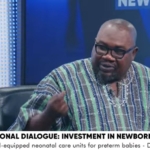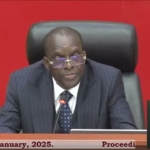
Detty December beckons, and as usual, homecomings, headline concerts, beach parties and raves will fill the calendar.
Artists travel home, diaspora visitors arrive, and event promoters race to build the year-end moment that pays.
The scale is electric, and the stakes are real. Size and spectacle do not excuse risk.
Right now, weather and crowd dynamics in Ghana are raising clear safety red flags.
Multiple weather services are reporting daily ultraviolet radiation levels that can reach the extreme category with a UV index of 11 or higher.
That level signals immediate harm to unprotected skin and eyes and increases the chance that people at outdoor daytime events will suffer sunburn, heat exhaustion or worse.
What that means for event planners and promoters
Event organisers are not only entertainers; they are custodians of public safety.
When a venue is packed, temperatures rise. Without adequate ventilation and cooling, packed crowds are at increased risk of fainting, heat seizures and suffocation.
These are not imaginary worries. Concert medics and security teams see heat-related incidents every year, and they scale with crowd density, exposure to midday sun and a lack of hydration stations.
The reality is simple. A hot, tightly packed crowd is a medical time bomb.
Organisers work under relentless pressure. A single oversight can turn a great night into a crisis and count the number of injuries or worse.
That is why acknowledging venue capacity limits is not bureaucracy. It is a fundamental safety rule.
Every space, open or enclosed, has a maximum number of people it can safely accommodate and manage.
Respecting that limit must be non-negotiable.
Proven, practical steps that protect shows and people
The good news is there are clear, affordable and proven measures that reduce risk and preserve the party.
Here are priority actions every promoter, venue and artist should adopt.
- Treat risk assessment as non-negotiable
A formal risk assessment must be done for every event. Identify heat exposure, crowd pinch points, first aid and evacuation routes, and plan controls. This is standard industry practice, and it pays off in fewer incidents and smoother shows. - Invest in cooling and ventilation systems
If your event is outdoors and in the daytime, provide shade structures, misting zones and adequate airflow. For indoor venues ensure HVAC systems are serviced, supply volumes are sufficient for full capacity and backup fans or portable cooling units are on standby. Cooling is not a luxury. It is a basic safety control. - Design crowd flow intentionally
Avoid long narrow funnels and choke-points that trap people. Create multiple entry and exit routes, stagger show times or set up energy-graded zones where people who want to dance are separated from those who need to sit. Proper layout reduces the likelihood of crushes and medical incidents. - Scale medical and security teams to the crowd and the climate
Security must be trained in compassionate de-escalation and basic medical triage. Medical teams should be visible, staffed and supplied with cooling devices and IV fluids when necessary. Quick access to treatment saves lives and reputations. - Keep hydration and shade free and obvious
Water stations, designated cool-down areas and clear signage are simple to provide and immediately effective. Promote hydration in all pre-show communications and on social media. Offer complimentary water or partner with concessions to keep costs low. - Communicate expectations to ticket buyers
Use pre-show promotions, ticket notes and on-site announcements to set expectations. Tell fans what to bring, where to hydrate and how to find medical help. When people know the rules and the supports, they behave safer, and the event runs better. - Build incident playbooks and post-event follow-up
If an incident goes viral, the organiser who can demonstrate a clear, humane response will command public trust. Have a plan to investigate, issue a statement and make amends where needed.
A practical crowd control tool that will save events
To maintain high standards for free events and ensure safety in future seasons, I strongly recommend implementing free capacity-controlled access tickets.
This is not a revenue play. It is a crowd management tool that gives organisers a vital way to track and limit the number of people accessing a venue.
Controlled free tickets allow you to enforce capacity limits, map entry times, plan medical and security staffing accurately and collect contactable data for safety communications.
In short, it turns guesswork into logistics and prevents the kind of overload that turns fun into catastrophe.
Why compassion is also good business
There is a commercial case for safety. A reputation for well-run, safe events attracts repeat ticket buyers, reassures international partners and reduces legal exposure.
Public humiliation and poor handling of medical issues or avoidable injuries damage trust and shrink future audiences.
Thoughtful safety design is an investment in brand and revenue.
What attendees should do
Patrons also have a role. Check event details before you go, wear lightweight sun-protective clothing, carry a refillable water bottle if permitted, and know the nearest medical point. If you see someone in distress, notify staff immediately. Festivals and concerts are shared spaces, and looking out for each other keeps the vibe alive.
Organisers and artists, listen up.
Entertainment thrives on energy. That energy depends on the people in the room arriving intact and staying well.
If you want packed venues and sell-out runs, then build shows that protect people from the heat and from harm.
Make cooling, crowd control and compassionate security non-negotiable line items in your budget and in your brief.
Use capacity-controlled free tickets for crowd predictability. Commit to planning, invest in basic safety infrastructure and train your teams.
Detty December can remain the ‘cocoa season’ for promoters and the season of joy for fans, but only if we commit to doing it safely and respectfully. Protect the crowd, and the crowd will protect the show’s legacy.
About the author
Amelley Djosu is a marketing communications strategist, creative entrepreneur and journalist whose work sits at the crossroads of culture, creativity and commerce. She is known for delivering clear, compelling insights that influence thought and direction within the creative industry.
- President Commissions 36.5 Million Dollars Hospital In The Tain District
- You Will Not Go Free For Killing An Hard Working MP – Akufo-Addo To MP’s Killer
- I Will Lead You To Victory – Ato Forson Assures NDC Supporters
Visit Our Social Media for More




